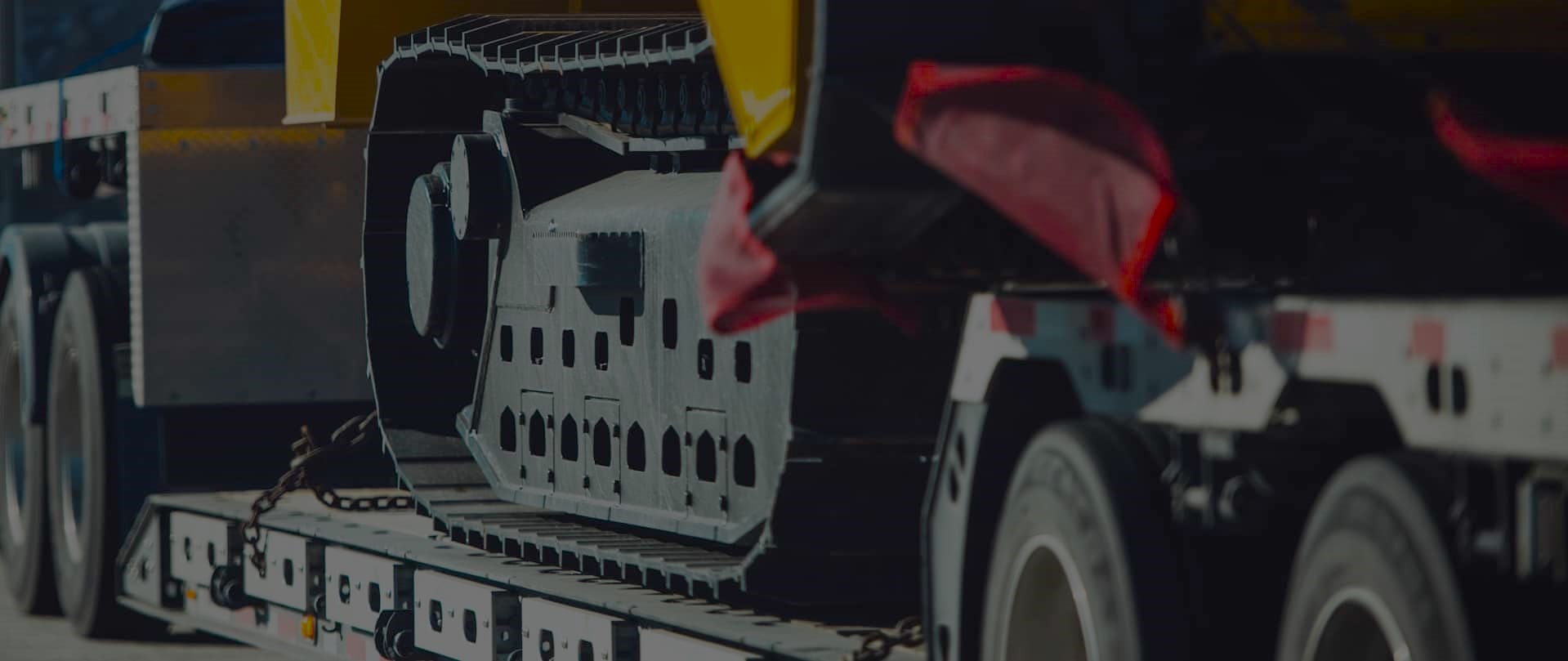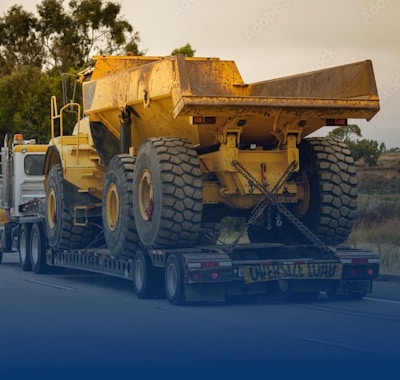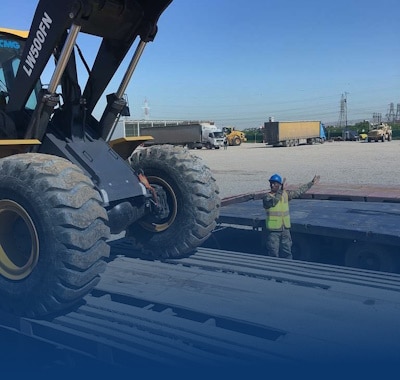Oversized Load Regulations in the Southeast for Tourists
Freedom Heavy Haul can offer expedited Pickup and Delivery for any size shipment anywhere in the USA. Contact us today for No Hassle, No Pressure Pricing.
Planning big shipments around peak holiday travel matters. This guide shows how state rules pause or limit oversize freight on major holidays so you can time permits, pilot cars, and routes with confidence.
Many Department of Transportation offices block travel on New Year’s Day, Memorial Day, Independence Day, Labor Day, Thanksgiving, and Christmas. These holiday curfews cut congestion and improve safety when traffic spikes.
Know the noon cutoffs and sunrise restarts. Some states force staging before a noon closure; others let movement resume at legal sunrise after a holiday pause. That affects whether travel allowed in your permit changes or you must wait.
We cover permit provisions, escort needs, banners and lights, and how oversize load versus overweight rules differ. Follow these practical tips to align your route, avoid downtime, and keep shipments on schedule through the busiest times of the year.
How this guide helps you navigate tourist-season traffic, permits, and curfews
State curfews and daytime cutoffs reshape when heavy-haul shipments may roll around national holidays. This guide pulls complex rules into clear steps so you can check whether travel allowed matches permit windows, noon cutoffs, or sunrise restarts.
Quick, practical checks:
- Match your permit’s provisions to the holiday calendar and specific corridor rules.
- Confirm escort vehicle notes and any route-specific conditions before you file.
- Plan staging spots if an allowed noon or sunset cutoff could strand your crew.
“Double-check permit hours against live curfew patterns — it’s the best way to avoid being parked at the shoulder.”
What you’ll get: a step-by-step plan for when travel allowed resumes at sunrise, how to avoid noon rules, and communication tips for receivers so shipments stay reliable across busy holidays.
| Focus | Action | Result |
|---|---|---|
| Permit details | Verify escort and provisions | Compliant movement, fewer delays |
| Noon/sunrise rules | Build a time buffer | Avoid staging at roadside |
| Receiver coordination | Share ETA and curfew notes | Smoother freight travel and fewer missed windows |
State-by-state holiday restrictions snapshot for the Southeast
Holiday rules vary by state — know the blackout windows and plan around them. Below are concise notes to help map permits and routes before a federal holiday.
Alabama
No OSOW movement from sunset before the holiday until sunrise after. Plan staging to avoid being stopped at sunset and confirm permit provisions early.
Florida
On the holiday itself, travel is not allowed for loads over 80 feet long, 10 feet wide, or 14’6″ high. Double-check dimensions on your permit if your vehicle is near those thresholds.
Georgia
Georgia prohibits OSOW travel on the holiday. If your permit shows travel allowed, expect to wait until the next legal sunrise.
Mississippi
Typical pause: noon Saturday to 30 minutes before sunrise Tuesday. Clear the state before Saturday noon or stage safely until the Tuesday restart.
North Carolina
Travel is allowed only with a prior-issued permit. Verify escort and special conditions listed on the permit before departure.
South Carolina
No OSOW travel permitted on the holiday. Schedule movements to resume at sunrise on the next authorized day.
Tennessee & Virginia
Tennessee usually pauses escorted travel from noon Friday to sunrise Tuesday. Virginia restricts from noon Friday to sunrise Tuesday, with permit provisions applying — align timing to the noon cutoffs.
Neighboring states
Kentucky and Louisiana often have fewer restricted holidays, while Arkansas can enforce noon-to-sunrise bans tied to dimensions and weight. Factor these when routing multistate freight.
- Tip: Build buffers around noon and sunset cutoffs and verify permits for sunrise restarts.
- Tip: Confirm escort vehicle notes and route conditions before you file permits.
| State | Typical blackout | Action |
|---|---|---|
| Alabama | Sunset–sunrise | Stage early; confirm permit |
| Florida | Holiday (size thresholds) | Verify dimensions on permit |
| Mississippi | Noon Sat–pre-sunrise Tue | Clear before noon or hold |
Southeast oversized load restrictions during tourist season
Federal holiday weekends often trigger statewide curfews that change when heavy-haul shipments may move. Memorial Day, Independence Day, and Labor Day are the most common federal holidays that prompt broad travel pause rules.
Common windows to watch:
- Noon cutoffs on the day before a holiday — many states start bans at noon Friday or Saturday.
- Sunset-to-sunrise bans across the holiday weekend that halt movement through busy evening hours.
- “No travel Monday” rules when a holiday lands on Monday, sometimes extending pause until legal sunrise Tuesday.
Pilot and escort nuances
Escort vehicle provisions can change what “travel allowed” means. In some states, escorted movement is paused entirely while certain non-escorted freight may still proceed under tight conditions.
“Read the permit provisions closely — pilot car notes and listed conditions often decide whether you can move or must stage.”
Practical checklist: confirm dimensions and weight against each state’s rules, build buffers around noon and sunset, and choose safe staging near borders to avoid roadside stops. Traffic surges on beach corridors can add delays, so include extra time in your plan and verify permits and escort needs before departure.
Plan your timing: sunrise, sunset, and noon rules that can make or break your schedule
Timing is everything: sunrise, sunset, and noon cutoffs often decide whether a heavy-haul run moves or waits. Build a plan that respects state curfews and ties every move to the exact language in your permit.
Build buffers around “noon” and “sunset” to avoid being parked at the shoulder
Start early and clear any state with a noon cutoff at least one hour before the posted time. Unexpected traffic can erase a small margin and force an unplanned stop.
Treat sunset as a hard stop. Aim to reach a safe staging point well before dusk to avoid being parked at the shoulder if traffic slows or an incident blocks your route.
When weekend travel is allowed vs. when Monday holiday bans apply
Know which weekend windows each state permits and how Monday holiday bans change that pattern. Some states resume travel only at the next legal sunrise, which can be Tuesday after a Monday holiday.
- Align segments: plan to arrive at restrictive states either before an allowed noon or after the sunrise restart.
- Protect your timeline: build a conservative schedule for multistate shipments so a delay in one state doesn’t push you into another state’s blackout.
- Verify dimensions and weight: confirm your dimensions and weight early so a small change doesn’t flip you into a restricted class.
“Tie your departure and ETA to the permit — ‘travel allowed’ can vanish if escort notes or conditions change.”
| Trigger | Action | Result |
|---|---|---|
| Noon cutoff | Clear border 60+ min early | Avoid roadside holds |
| Sunset ban | Stage before dusk | Safe parking and compliance |
| Monday holiday | Plan for sunrise restart | Receiver aligned; fewer delays |
Permits, escorts, and conditions: getting compliant before you roll
A clear permit—checked for pilot car needs and dimension limits—keeps post-holiday headaches at bay. Read every provision and confirm whether travel allowed matches the holiday calendar and state rules.
Dimensions and weight thresholds that flip you into restricted status
Verify dimensions and weight early. Florida prohibits holiday movement if the vehicle exceeds 80 feet length, 10 feet width, or 14’6″ height. Arkansas and some neighboring states also use strict dimension and weight cutoffs that can change permit validity.
OW-only vs. OS travel: what’s allowed when oversize isn’t
Some states permit overweight-only trips when oversize travel is paused. If your setup can run as OW-only, update the permit and confirm pilot and signage rules to keep the shipment moving.
Pilot car requirements by state and route type
Escort needs vary. Tennessee and Virginia often pause escorted movement from noon Friday to sunrise Tuesday, so plan staging or border holds accordingly. North Carolina allows travel only with a prior-issued permit—make sure pilot vehicles meet route-specific conditions.
Submitting permits early for post-holiday departures
Submit permits well before the holiday to secure the first available post-holiday window. Early filing reduces backlog risk and gives time to correct errors so your freight clears at sunrise without surprise delays.
- Checklist: verify permit text, pilot car notes, dimensions, weight, and vehicle provisions before you roll.
| Item | Action | Result |
|---|---|---|
| Permit provisions | Read and confirm escort notes | Clear legal authority to travel |
| Dimensions/weight | Compare to state thresholds | Avoid denied movement |
| Filing time | Submit early | First post-holiday slot |
Route strategy and safety during peak tourist travel
Choose alternative corridors that offer safer staging and fewer midday bottlenecks for heavy-haul moves. Routes close to beaches and event venues can turn a legal window into an impractical transit for an oversize load. Plan to avoid those segments when possible.
Re-sequence risky segments: move through likely bottlenecks earlier in the day or wait until a sunrise restart. That reduces the chance you’ll hit an allowed noon cutoff or be forced to stop at the shoulder.
Practical route tactics
- Select routes with truck-friendly exits, wide shoulders, and nearby services so a sudden hold for permit conditions stays safe.
- Match pilot car availability to the corridor plan when travel allowed depends on escort status.
- Build contingency branches so you can shift routes without violating travel restrictions or missing a sunrise window.
- Monitor real-time conditions and adjust if traffic patterns threaten your ability to clear a noon rule or reach safe staging before sunset.
“Plan wider turns and slower speeds on urban detours, and keep generous following distances when traffic spikes.”
Safety first: keep team communication open, confirm permit text for each route, and prefer corridors where staged holds are practical. These small choices protect freight, drivers, and the public while keeping your schedule realistic.
Tourist-season checklist: from pre-trip to post-holiday restart
A clear checklist keeps heavy-haul plans on track from the days before a holiday through the first legal restart at sunrise. Follow these concise steps to reduce idle time and keep permits and escorts aligned with state rules.
Pre-holiday: ship early, stage near borders, confirm permit provisions
Submit your permit requests well ahead of the holiday. Early filing helps you secure the first post-holiday window and avoid backlog.
Stage close to the border you will enter after the break so you can make the maximum run at sunrise. Confirm escort availability and permit provisions for each state you cross.
During holiday: secure equipment, communicate ETAs, monitor DOT alerts
Secure signs, lights, and flags and park in safe staging areas. Keep receivers and crew updated on ETAs so everyone expects the first legal move.
Watch DOT alerts and weather so your team can roll at the authorized sunrise rather than start late into heavy traffic.
After holiday: resume at sunrise, verify lingering curfews, update receivers
Verify there are no lingering county-level rules or permit notes that delay your restart. If traffic builds near your restart point, wait for a safer window.
“Double-check permits and confirm escorts before you roll — that small step avoids roadside holds.”
| Step | Action | Result |
|---|---|---|
| Pre-trip | File permits early; stage at border | Maximize post-sunrise run |
| Holiday | Secure gear; monitor DOT | Ready to move at sunrise |
| Post-holiday | Verify curfews; update receivers | Smoother shipment and fewer delays |
Ready your shipment for holiday traffic and arrive on time
A tight permit plan that maps noon cutoffs and sunrise restarts turns curfews into predictable time blocks.
Pull your plan together: confirm permits and provisions, review allowed noon and sunrise windows, and lock in escort and driver schedules so an oversize load moves legally. Share concise information with receivers and your team so everyone knows when travel is allowed and what conditions may shift timing.
If an allowed noon window is tight, stage closer or shift departure so critical segments clear with time to spare. Use a checklist to validate vehicles, flags, lights, and signs before the restart to cut inspection delays and keep freight moving.
Track performance each year and refine buffers. With solid permits and a coordinated team, you turn restrictions into reliable shipping windows and deliver on time.







